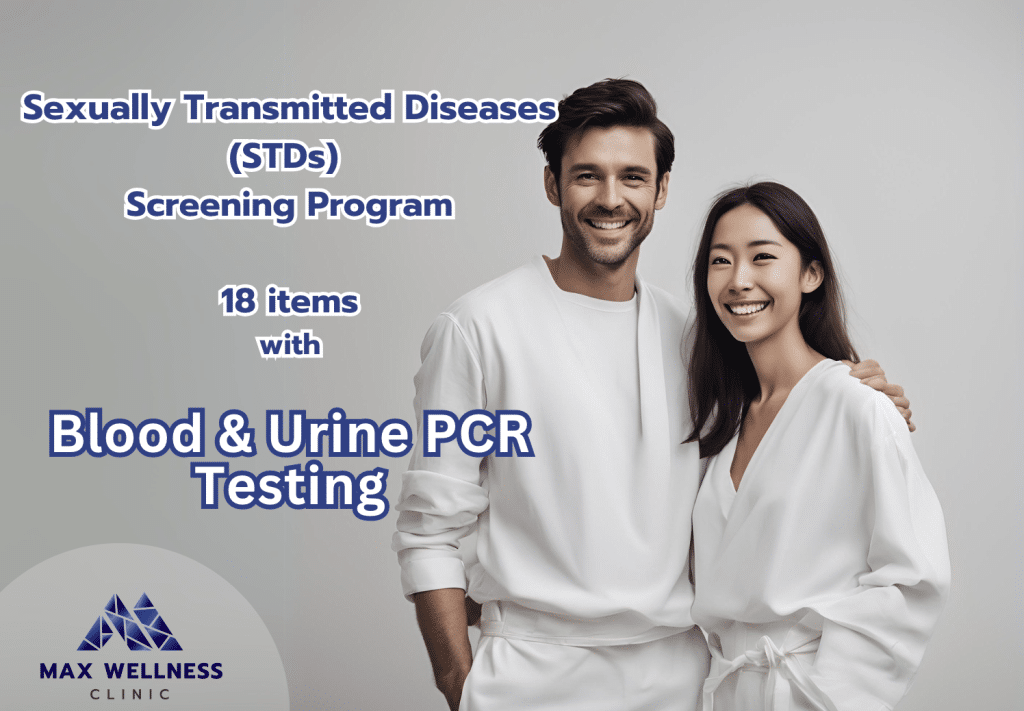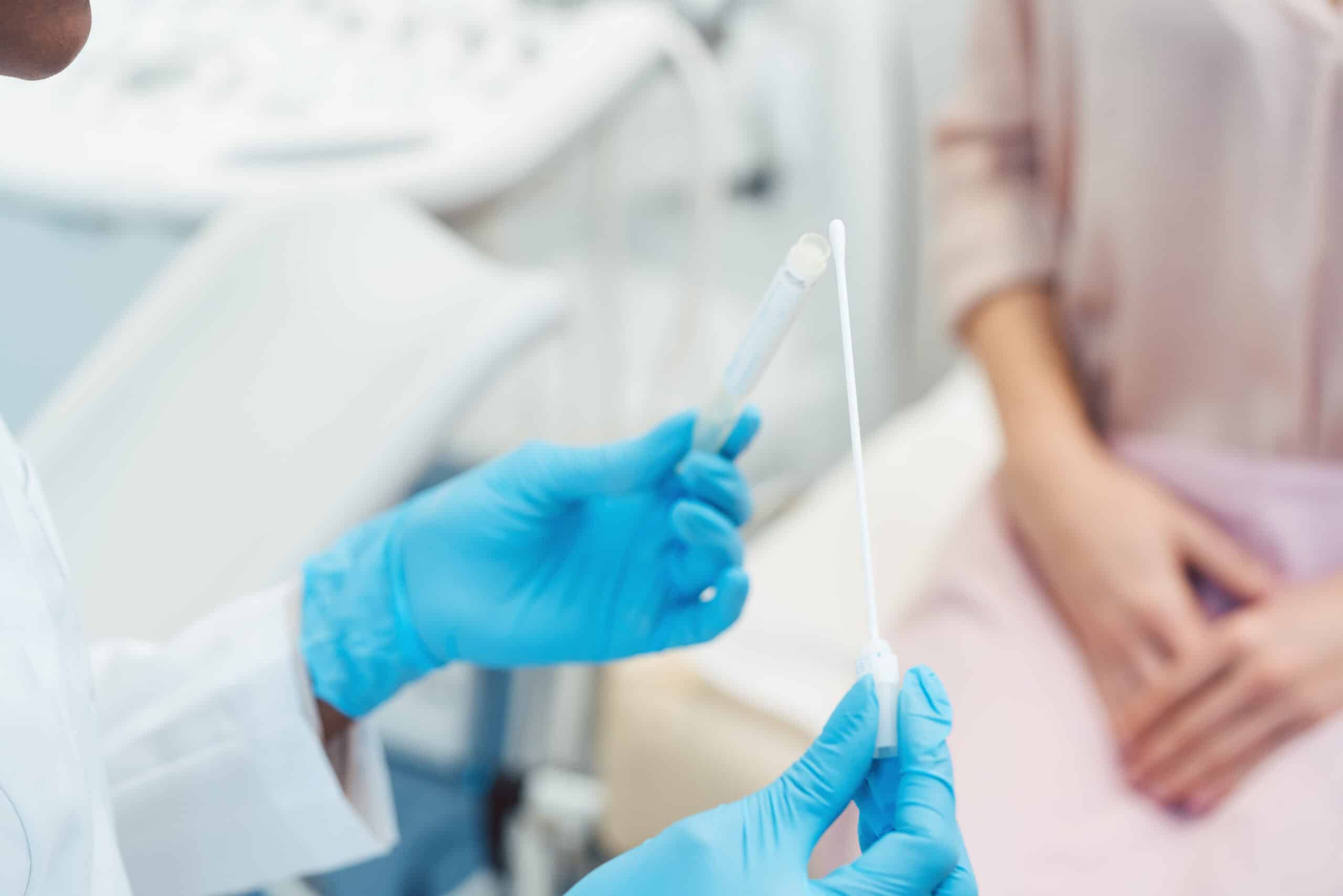
Sexually transmitted diseases (STDs) are diseases primarily spread through unprotected sexual contact but can also be transmitted through other means, such as contact with body fluids and blood. If certain STDs are detected late or left untreated, they can cause serious health issues affecting the nervous system, cardiovascular system, fertility, sexual function (including erectile dysfunction), and can even increase the risk of contracting HIV. [1]
Most individuals with STDs do not exhibit symptoms and are often unaware of their condition. Common symptoms, if present, include discharge from the vagina or urethra, sores on the genital area, and pain in the lower abdomen.
In reality, no one knows the exact number of Thais infected with sexually transmitted diseases (STDs) because many patients are asymptomatic and do not seek testing. However, we can refer to the statistics from the 2022 annual report by the Division of AIDS and Sexually Transmitted diseases, Department of Disease Control, Ministry of Public Health as follows: [2]
However, these reported numbers might be just the tip of the iceberg, as there are many undiagnosed and unreported cases. Additionally, there may be diseases outside the reporting system of the Ministry of Public Health.
Further data from specific studies, such as one conducted among sex workers in Pattaya between 2016-2020, showed an HIV infection rate of 172.41 per 1,000 samples and a syphilis infection rate of 154.93 per 1,000 person-months.[3]
Many men experiencing erectile dysfunction (ED) or impotence including physicians often overlook one key cause: sexually transmitted diseases (STDs). While common causes include vascular problems from conditions like hypertension, diabetes, medications, and hormonal deficiencies, STDs such as gonorrhea and non-gonococcal urethritis can also contribute to ED.
Most STDs don’t affect erectile function directly. However, diseases like HIV, hepatitis, gonorrhea, and non-gonococcal urethritis can lead to ED if they cause prostatitis (inflammation of the prostate gland). Prostatitis not only affects erection quality but can also lead to premature ejaculation.
The prostate gland is crucial to the male reproductive system and connects to the urethra. STDs can enter through the tip of the penis, travel into the urethra, and eventually infect the prostate, leading to inflammation.
An inflamed or infected prostate can cause pain before, during, or after intercourse. Additionally, diseases like gonorrhea can cause painful discharge from the penis. Inflammation of the prostate can reduce blood flow to the penis, further contributing to ED.
Men with noticeable symptoms usually seek prompt diagnosis and treatment. However, those with mild or no symptoms often explore various treatments for ED or premature ejaculation, such as shockwave therapy, P-Shot (PRP injections into the penis), or hormone replacement. These treatments may fail if the underlying issue of prostatitis or chronic pelvic pain syndrome (CPPS) remains unaddressed.
Anyone who has ever had sexual activities should consider getting tested for STDs. This is especially important for individuals with risky sexual behaviors, such as having unprotected sex or multiple sexual partners. Additionally, those planning to marry or have children should undergo screening to prevent transmitting diseases to their partner and future children, as some STDs can be passed from mother to fetus.
Symptoms of STDs can vary, but if you experience any of the following, you may be at risk of contracting an STD:

HIV (Human Immunodeficiency Virus): Within the first 1-2 weeks after infection, 40–90% of individuals may experience symptoms known as ARS (Acute retroviral syndrome), which resemble flu-like symptoms. This includes fever, enlarged lymph nodes, a sore throat, and sometimes a rash on the body.[4]
Therefore, if you experience these symptoms after engaging in risky behaviors such as unprotected sex, condom breakage, or unsafe needle use, it’s essential to consult a doctor for appropriate HIV teSTDng. Different testing methods have varying levels of sensitivity and time in detecting the virus.
Syphilis: Many individuals infected with syphilis remain asymptomatic for several years until they progress to advanced stages. Syphilis symptoms are divided into three stages [5]:
Primary Syphilis: Characterized by painless sores called chancres on the genitals, rectum, or elsewhere on the body. These sores typically heal within 3–10 days, and some patients may not notice them. Without treatment, syphilis progresses to the second stage.
Secondary Syphilis: Symptoms include a rash on the palms and soles of the feet, as well as white or gray patches in moist areas such as the genitals, mouth, or areas with previous chancres. These symptoms typically resolve on their own and progress to a latent stage, which may be asymptomatic for several years.
Tertiary Syphilis: At this stage, the infection spreads to various systems of the body, resulting in neurological symptoms, cardiovascular issues, bone damage, and skin lesions. Symptoms include dementia, paralysis, sensory deficits, changes in personality, and erectile dysfunction.
Gonorrhea: Symptoms typically appear around 2 weeks after contracting the infection. However, 1 in 10 men and 5 in 10 women may not exhibit noticeable symptoms, leading to unawareness and lack of treatment.[6]
Symptoms in men may include:
– Discharge from the penis, which can be white, yellow, or greenish.
– Pain or burning sensation during urination.
– Swelling and redness around the foreskin.
– Pain in the testicles (less common).
Symptoms in women may include:
– Abnormal vaginal discharge.
– Pain or burning sensation during urination.
– Lower abdominal pain (less common).
– Abnormal bleeding between periods, heavy or irregular periods, or bleeding after sex (less common).
Gonorrhea can also infect other areas besides the genitals, such as the rectum, throat, and eyes, through contact with infected fluids. Symptoms in these areas may include redness, irritation, swelling, discharge, and pain.
Non-Gonococcal Urethritis (NSU): Most individuals infected with Chlamydia do not have symptoms, while some may experience symptoms for about 2-3 days before they disappear. However, this does not mean the infection has cleared; instead, asymptomatic individuals may unknowingly spread the infection to their partners. [7]
Symptoms in men may include:
– Pain during urination.
– White, cloudy, or clear discharge from the penis.
– Itching or burning sensation in the urethra.
– Pain in the testicles.
Untreated diseases in men may spread to the urethra and epididymis, leading to fertility issues.
Symptoms in women may include:
– Abnormal vaginal discharge.
– Pain or burning sensation during urination.
– Abdominal or pelvic pain.
– Pain during sex.
– Bleeding after sex or between periods.
Untreated diseases in women may spread to the uterus, fallopian tubes, and ovaries, potentially causing ectopic pregnancy and future fertility problems.
**Blood Tests**: can be used to detect HIV, hepatitis B, hepatitis C, and syphilis diseases.
**Swab Tests**: These are suitable for cases where there are visible signs of infection, such as sores, pus, or discharge from the genital or rectal area. Swab tests can detect both gonorrhea and non-gonococcal diseases. However, there are limitations to this method in cases where there are no visible signs of disease or symptoms.
**Urine Samples for PCR Testing**: Currently, PCR (Polymerase chain reaction) testing offers rapid and accurate detection of STDs, even in the absence of symptoms. PCR amplifies the genetic material of the pathogens being tested for, making them easier to detect.[8] Different PCR tests vary in sensitivity, but studies comparing them have shown PCR to be highly sensitive, ranging from 97.1% to 100%, depending on each PCR test used. [9] [10]
PCR urine testing is convenient and highly effective for detecting multiple STDs simultaneously (7-15 pathogens), including syphilis, gonorrhea, non-gonococcal urethritis, herpes simplex virus (HSV), chancroid, fungi, and various bacteria. It can detect diseases even in the absence of symptoms or when symptoms are unclear.
– No fasting is necessary: you can eat as usual.
– Abstain from sexual activity for 48 hours
Additional Recommendations for Women:
– Do not douche or use vaginal cleansers for 48 hours
– Do not schedule testing during menstruation: wait at least 7 days after the end of your period.
– Do not use intravaginal creams or medications for at least 48 hours before testing.

[1] https://www.who.int/health-topics/sexually-transmitted-infections#tab=tab_1
[2] https://ddc.moph.go.th/uploads/publish/1484920231010090902.pdf
[3]https://digital.car.chula.ac.th/cgi/viewcontent.cgi?article=6091&context=chulaetd
[4]https://www.sciencedirect.com/topics/medicine-and-dentistry/acute-hiv-infection
[6]https://www.nhs.uk/conditions/gonorrhoea/symptoms/